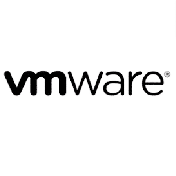Seminarinhalt
Nach Abschluss des Seminars haben die Teilnehmer*innen Kenntnisse zu folgenden Themen:
- Beschreiben von Cisco WSA
- Bereitstellung von Proxy-Diensten
- Authentifizierung verwenden
- Beschreiben von Entschlüsselungsrichtlinien zur Steuerung des HTTPS-Verkehrs
- Verstehen von differenzierten Zugriffsrichtlinien und Identifikationsprofilen
- Erzwingen von Einstellungen für die akzeptable Verwendung
- Verteidigung gegen Malware
- Beschreiben der Datensicherheit und Verhinderung von Datenverlust
- Durchführung der Administration und Fehlerbehebung
Programm
- Technology Use Case
- Cisco WSA Solution
- Cisco WSA Features
- Cisco WSA Architecture
- Proxy Service
- Integrated Layer 4 Traffic Monitor
- Data Loss Prevention
- Cisco Cognitive Intelligence
- Management Tools
- Cisco Advanced Web Security Reporting (AWSR) and Third-Party Integration
- Cisco Content Security Management Appliance (SMA)
Deploying Proxy Services
- Explicit Forward Mode vs. Transparent Mode
- Transparent Mode Traffic Redirection
- Web Cache Control Protocol
- Web Cache Communication Protocol (WCCP) Upstream and Downstream Flow
- Proxy Bypass
- Proxy Caching
- Proxy Auto-Config (PAC) Files
- FTP Proxy
- Socket Secure (SOCKS) Proxy
- Proxy Access Log and HTTP Headers
- Customizing Error Notifications with End User Notification (EUN) Pages
Utilizing Authentication
- Authentication Protocols
- Authentication Realms
- Tracking User Credentials
- Explicit (Forward) and Transparent Proxy Mode
- Bypassing Authentication with Problematic Agents
- Reporting and Authentication
- Re-Authentication
- FTP Proxy Authentication
- Troubleshooting Joining Domains and Test Authentication
- Integration with Cisco Identity Services Engine (ISE)
Creating Decryption Policies to Control HTTPS Traffic
- Transport Layer Security (TLS)/Secure Sockets Layer (SSL) Inspection Overview
- Certificate Overview
- Overview of HTTPS Decryption Policies
- Activating HTTPS Proxy Function
- Access Control List (ACL) Tags for HTTPS Inspection
- Access Log Examples
Understanding Differentiated Traffic Access Policies and Identification Profiles
- Overview of Access Policies
- Access Policy Groups
- Overview of Identification Profiles
- Identification Profiles and Authentication
- Access Policy and Identification Profiles Processing Order
- Other Policy Types
- Access Log Examples
- ACL Decision Tags and Policy Groups
- Enforcing Time-Based and Traffic Volume Acceptable Use Policies, and End User Notifications
Defending Against Malware
- Web Reputation Filters
- Anti-Malware Scanning
- Scanning Outbound Traffic
- Anti-Malware and Reputation in Policies
- File Reputation Filtering and File Analysis
- Cisco Advanced Malware Protection
- File Reputation and Analysis Features
- Integration with Cisco Cognitive Intelligence
Enforcing Acceptable Use Control Settings
- Controlling Web Usage
- URL Filtering
- URL Category Solutions
- Dynamic Content Analysis Engine
- Web Application Visibility and Control
- Enforcing Media Bandwidth Limits
- Software as a Service (SaaS) Access Control
- Filtering Adult Content
Data Security and Data Loss Prevention
- Data Security
- Cisco Data Security Solution
- Data Security Policy Definitions
- Data Security Logs
Performing Administration and Troubleshooting
- Monitor the Cisco Web Security Appliance
- Cisco WSA Reports
- Monitoring System Activity Through Logs
- System Administration Tasks
- Troubleshooting
- Command Line Interface
References
- Comparing Cisco WSA Models
- Comparing Cisco SMA Models
- Overview of Connect, Install, and Configure
- Deploying the Cisco Web Security Appliance Open Virtualization Format (OVF) Template
- Mapping Cisco Web Security Appliance Virtual Machine (VM) Ports to Correct Networks
- Connecting to the Cisco Web Security Virtual Appliance
- Enabling Layer 4 Traffic Monitor (L4TM)
- Accessing and Running the System Setup Wizard
- Reconnecting to the Cisco Web Security Appliance
- High Availability Overview
- Hardware Redundancy
- Introducing Common Address Redundancy Protocol (CARP)
- Configuring Failover Groups for High Availability
- Feature Comparison Across Traffic Redirection Options
- Architecture Scenarios When Deploying Cisco AnyConnect® Secure Mobility
Zielgruppen
- Security Architects
- System Designers
- Network Administrators
- Operations Engineers
- Network Managers, Network oder Security Technicians, und Security Engineers und Manager*innen, die für die Web Security verantwortlich sind
- Cisco Integrators und Partner*innen
Vorkenntnisse
- TCP / IP-Dienste, einschließlich DNS (Domain Name System), SSH (Secure Shell), FTP, SNMP (Simple Network Management Protocol), HTTP und HTTPS
- IP-Routing
Sie sollten über eine oder mehrere der folgenden technischen Grundkompetenzen oder gleichwertige Kenntnisse verfügen:
- Cisco-Zertifizierung (CCENT-Zertifizierung oder höher)
- Relevante Branchenzertifizierung [International Information System Security Certification Consortium ((ISC) 2), Verband der IT-Industrie (CompTIA) Security +, Internationaler Rat der Berater für den elektronischen Handel (EC-Council), Global Information Assurance Certification (GIAC), ISACA]
- Abschlussbestätigung der Cisco Networking Academy (CCNA® 1 und CCNA 2)
- Windows-Kenntnisse: Microsoft [Microsoft-Spezialist, Microsoft Certified Solutions Associate (MCSA), Microsoft Certified Solutions Expert (MCSE)], CompTIA (A +, Network +, Server +)



